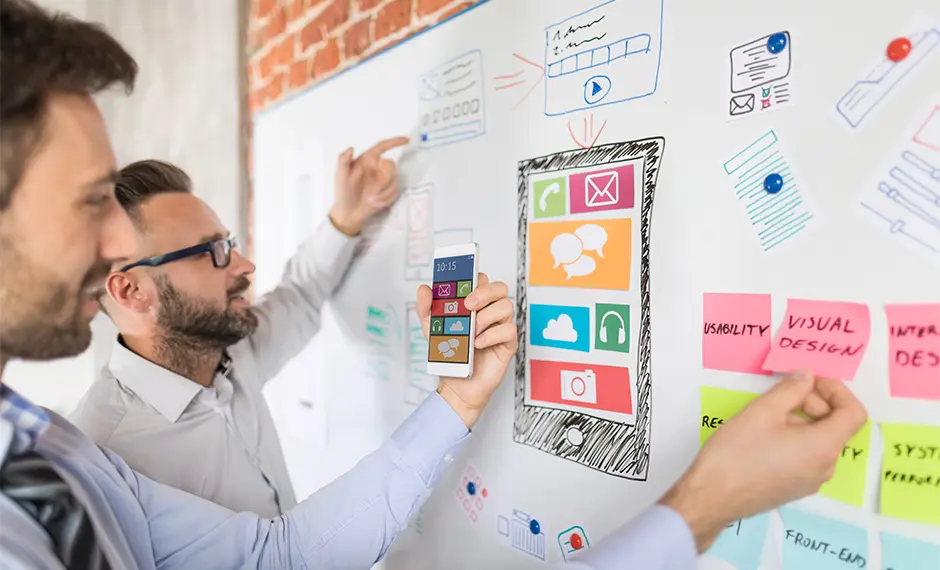Digital Transformation
Unlock the potential of digital transformation, harnessing the full capabilities of your existing systems or seamlessly integrating multiple platforms to extract valuable insights
Unlock the potential of digital transformation, harnessing the full capabilities of your existing systems or seamlessly integrating multiple platforms to extract valuable insights
Embracing digital is a transformative journey that enables your business to leverage cutting-edge technologies, optimize processes, and unlock new opportunities for growth and innovation. Whether it's harnessing the power of data analytics, adopting cloud-based solutions, or integrating automation and artificial intelligence, the right digital strategy can help you streamline operations, enhance customer experiences, and make data-driven decisions.
With a comprehensive suite of tailored solutions, TenUp is dedicated to guiding businesses through their digital transformation journey, empowering them to embrace the future and achieve sustainable success in an increasingly digital world.

Comprehensive evaluation of existing legacy systems to identify challenges, risks, and opportunities for successful migration.
Defining a new architecture blueprint, and implementing changes to enhance the system's efficiency, reliability, and adaptability for modernization.
Migrating from on-premises or legacy systems to cloud platforms, and then optimizing the cloud environment for costs, performance and scale.
Effective coordination and communication among stakeholders, ensuring alignment of project goals, expectations, and requirements throughout the development process.
Designing bespoke software platforms that address your unique modernization needs to align with evolving business goals.
Modernizing to leverage automation and streamline processes, enhancing efficiency, productivity, and agility within the organization.

Identifying cost-saving opportunities such as rightsizing instances, utilizing reserved instances or spot instances, implementing automation for resource management.
seamlessly transitioning and modernizing existing legacy systems and applications to cloud platforms, enabling organizations to unlock the benefits of scalability, flexibility, cost-efficiency, and enhanced performance in the cloud environment.
Utilizing the cloud achieve faster development cycles, improved collaboration, increased scalability, and enhanced agility.
Optimizing resource allocation, network configuration, storage performance, application design, caching mechanisms to ensure efficient utilization of cloud resources.
Comprehensive solution to efficiently manage and govern diverse multi-cloud environments, through a multi-cloud platform.
Real-time monitoring, data analysis, and evaluation of cloud resources and services.
Unlocking efficiency, scalability, and innovation with comprehensive legacy modernization.
Migrate legacy data with full fidelity and minimum disruption to preserve context and meet compliance.
Identifying, assessing, and mitigating potential risks and challenges while transitioning from legacy to modern tools.
Enhancing the performance, scalability, usability, and maintainability of legacy applications to align with current business needs and technology standards.
Ensuring that employees are prepared, confident, and engaged in adopting the new system, resulting in smooth execution and improved outcomes.
Establishing security and governance measure to ensure data integrity, governance and adherence to regulatory guidelines.
Revolutionize workflows with mobile solutions, enhancing accessibility and productivity across your digital transformation journey.
Immerse users in interactive experiences, merging digital and physical realms for enhanced engagement and innovation.
Create immersive environments that drive collaboration, training, and problem-solving to new heights.
Embrace the decentralized web for enhanced security, data ownership, and seamless interactions, shaping the future of online experiences.
Seamlessly connect devices, gather meaningful data, and optimize processes for unprecedented efficiency in your digital transformation venture.
Use advanced analytics to process vast volumes of data, uncover patterns, and inform strategic decisions.
There are various approaches to application modernization, such as rehosting (lift-and-shift), re-platforming, refactoring, rebuilding, replacing, or retiring applications. The choice of approach depends on factors like complexity, cost, time, and desired outcomes.
As a digital transformation company, we offer expertise in legacy migration, including comprehensive assessment, planning, data migration, application re-engineering, and testing to ensure a successful migration process.
The right cloud solutions provider can help you in selecting the right cloud services, designing cloud architectures, migrating applications and data to the cloud, optimizing cloud costs, and ensuring security and compliance in the cloud environment.
While change management approaches vary from case to case, some popular strategies include communication plans, training programs, stakeholder engagement, and ongoing support to facilitate a smooth transition and maximize the benefits of change.
It is important to implement robust security measures such as encryption, access controls, regular audits etc to ensure data privacy and compliance with regulatory standards.
A successful digital transformation strategy typically includes a combination of elements such as reimagining customer experiences, digitizing business processes, leveraging data and analytics, embracing emerging technologies (e.g., AI, IoT), fostering a culture of innovation, and ensuring strong cybersecurity measures.
Digital transformation has a significant impact on customer experiences by enabling organizations to deliver personalized, seamless, and omnichannel interactions. It empowers customers with self-service options, faster response times, access to real-time information, and tailored products/services, leading to higher satisfaction and loyalty.
The six dimensions of digital transformation encompass various aspects of organizational change. These include strategy, leadership, customer experience, operational processes, business model, and technology. These dimensions are interrelated and should be considered holistically when planning and implementing digital transformation initiatives.
Digital transformation in DevOps is the integration of digital technologies, processes, and practices to enhance software development and delivery capabilities. It involves leveraging automation, collaboration tools, and cloud computing to streamline workflows, improve efficiency, and accelerate the development and deployment of software applications.
Our team has expertise in almost every programming language.
Engage in an initial conversation to discuss your needs, objectives, and technology, and receive custom solutions aligned with your organization's requirements.
Present a customized solution matching your objectives. Team structure discussions ensure smooth collaboration and successful implementation.
After solution finalization and team structuring, implementation begins. Our experts work closely with you, ensuring clear communication, transparent progress, and performance insights.